1. Talic S, Shah S, Wild H, Gasevic D, Maharaj A, Ademi Z, et al. Effectiveness of public health measures in reducing the incidence of COVID-19, SARS-CoV-2 transmission, and COVID-19 mortality: systematic review and meta-analysis. BMJ. 2021; 375:e068302. PMID:
34789505.
2. Iezadi S, Gholipour K, Azami-Aghdash S, Ghiasi A, Rezapour A, Pourasghari H, et al. Effectiveness of non-pharmaceutical public health interventions against COVID-19: a systematic review and meta-analysis. PLoS One. 2021; 16(11):e0260371. PMID:
34813628.
3. Park IN, Yum HK. Stepwise strategy of social distancing in Korea. J Korean Med Sci. 2020; 35(28):e264. PMID:
32686376.
4. Yoon Y, Kim KR, Park H, Kim S, Kim YJ. Stepwise school opening and an impact on the epidemiology of COVID-19 in the children. J Korean Med Sci. 2020; 35(46):e414. PMID:
33258334.
6. Lee J, Choe YJ, Minn D, Kim JH. The seroprevalence of SARS-CoV-2 in children during early COVID-19 pandemic in Korea: a nationwide, population-based study. J Korean Med Sci. 2022; 37(44):e314. PMID:
36377292.
7. Korea Disease Control and Prevention Agency. Coronavirus disease 19 (COVID-19). Updated 2023. Accessed June 11, 2023.
https://ncov.kdca.go.kr/en/
.
8. MacIntyre CR, Ridda I, Seale H, Gao Z, Ratnamohan VM, Donovan L, et al. Respiratory viruses transmission from children to adults within a household. Vaccine. 2012; 30(19):3009–3014. PMID:
22119589.
9. Kombe IK, Agoti CN, Munywoki PK, Baguelin M, Nokes DJ, Medley GF. Integrating epidemiological and genetic data with different sampling intensities into a dynamic model of respiratory syncytial virus transmission. Sci Rep. 2021; 11(1):1463. PMID:
33446831.
10. McCaw JM, Howard PF, Richmond PC, Nissen M, Sloots T, Lambert SB, et al. Household transmission of respiratory viruses - assessment of viral, individual and household characteristics in a population study of healthy Australian adults. BMC Infect Dis. 2012; 12(1):345. PMID:
23231698.
11. Morgan OW, Parks S, Shim T, Blevins PA, Lucas PM, Sanchez R, et al. Household transmission of pandemic (H1N1) 2009, San Antonio, Texas, USA, April-May 2009. Emerg Infect Dis. 2010; 16(4):631–637. PMID:
20350377.
12. Adler FR, Stockmann C, Ampofo K, Pavia AT, Byington CL. Transmission of rhinovirus in the Utah BIG-LoVE families: consequences of age and household structure. PLoS One. 2018; 13(7):e0199388. PMID:
30044794.
13. Kim SJ, Lee S, Han H, Jung J, Yang SJ, Shin Y. Parental mental health and children’s behaviors and media usage during COVID-19-related school closures. J Korean Med Sci. 2021; 36(25):e184. PMID:
34184439.
14. Meherali S, Punjani N, Louie-Poon S, Abdul Rahim K, Das JK, Salam RA, et al. Mental health of children and adolescents amidst COVID-19 and past pandemics: a rapid systematic review. Int J Environ Res Public Health. 2021; 18(7):3432. PMID:
33810225.
15. Lampraki C, Hoffman A, Roquet A, Jopp DS. Loneliness during COVID-19: development and influencing factors. PLoS One. 2022; 17(3):e0265900. PMID:
35353850.
16. Singh S, Roy D, Sinha K, Parveen S, Sharma G, Joshi G. Impact of COVID-19 and lockdown on mental health of children and adolescents: a narrative review with recommendations. Psychiatry Res. 2020; 293:113429. PMID:
32882598.
17. Leon Rojas D, Castorena Torres F, Garza-Ornelas BM, Castillo Tarquino AM, Salinas Silva CA, Almanza Chanona JL, et al. Parents and school-aged children's mental well-being after prolonged school closures and confinement during the COVID-19 pandemic in Mexico: a cross-sectional online survey study. BMJ Paediatr Open. 2022; 6(1):e001468.
20. Fitzner J, Qasmieh S, Mounts AW, Alexander B, Besselaar T, Briand S, et al. Revision of clinical case definitions: influenza-like illness and severe acute respiratory infection. Bull World Health Organ. 2018; 96(2):122–128. PMID:
29403115.
21. Lee YS, Kang M, Cho J, Kang D, Min KH, Suh GY, et al. Nationwide social distancing and the epidemiology of severe acute respiratory infections. Yonsei Med J. 2021; 62(10):954–957. PMID:
34558876.
22. Park S, Michelow IC, Choe YJ. Shifting patterns of respiratory virus activity following social distancing measures for coronavirus disease 2019 in South Korea. J Infect Dis. 2021; 224(11):1900–1906. PMID:
34009376.
23. Shi HJ, Kim NY, Eom SA, Kim-Jeon MD, Oh SS, Moon BS, et al. Effects of non-pharmacological interventions on respiratory viruses other than SARS-CoV-2: analysis of laboratory surveillance and literature review from 2018 to 2021. J Korean Med Sci. 2022; 37(21):e172. PMID:
35638198.
24. Huh K, Jung J, Hong J, Kim M, Ahn JG, Kim JH, et al. Impact of nonpharmaceutical interventions on the incidence of respiratory infections during the coronavirus disease 2019 (COVID-19) outbreak in Korea: a nationwide surveillance study. Clin Infect Dis. 2021; 72(7):e184–e191. PMID:
33150393.
25. Oh KB, Doherty TM, Vetter V, Bonanni P. Lifting non-pharmaceutical interventions following the COVID-19 pandemic - the quiet before the storm? Expert Rev Vaccines. 2022; 21(11):1541–1553. PMID:
36039786.
26. Riepl A, Straßmayr L, Voitl P, Ehlmaier P, Voitl JJ, Langer K, et al. The surge of RSV and other respiratory viruses among children during the second COVID-19 pandemic winter season. Front Pediatr. 2023; 11:1112150. PMID:
36816380.
27. Kume Y, Hashimoto K, Chishiki M, Norito S, Suwa R, Ono T, et al. Changes in virus detection in hospitalized children before and after the severe acute respiratory syndrome coronavirus 2 pandemic. Influenza Other Respi Viruses. 2022; 16(5):837–841.
28. Nolen LD, Seeman S, Bruden D, Klejka J, Desnoyers C, Tiesinga J, et al. Impact of social distancing and travel restrictions on non-coronavirus disease 2019 (non-COVID-19) respiratory hospital admissions in young children in rural Alaska. Clin Infect Dis. 2021; 72(12):2196–2198. PMID:
32888007.
29. Lessler J, Reich NG, Brookmeyer R, Perl TM, Nelson KE, Cummings DA. Incubation periods of acute respiratory viral infections: a systematic review. Lancet Infect Dis. 2009; 9(5):291–300. PMID:
19393959.
30. Kim JH, Kim HY, Lee M, Ahn JG, Baek JY, Kim MY, et al. Respiratory syncytial virus outbreak without influenza in the second year of the coronavirus disease 2019 pandemic: a national sentinel surveillance in Korea, 2021-2022 season. J Korean Med Sci. 2022; 37(34):e258. PMID:
36038956.
31. Uyeki TM, Hui DS, Zambon M, Wentworth DE, Monto AS. Influenza. Lancet. 2022; 400(10353):693–706. PMID:
36030813.
32. Ali ST, Lau YC, Shan S, Ryu S, Du Z, Wang L, et al. Prediction of upcoming global infection burden of influenza seasons after relaxation of public health and social measures during the COVID-19 pandemic: a modelling study. Lancet Glob Health. 2022; 10(11):e1612–e1622. PMID:
36240828.
33. Rolfes MA, Talbot HK, McLean HQ, Stockwell MS, Ellingson KD, Lutrick K, et al. Household transmission of influenza A viruses in 2021-2022. JAMA. 2023; 329(6):482–489. PMID:
36701144.
34. Committee on Infectious Diseases. Recommendations for prevention and control of influenza in children, 2022-2023. Pediatrics. 2022; 150(4):e2022059274. PMID:
36065749.

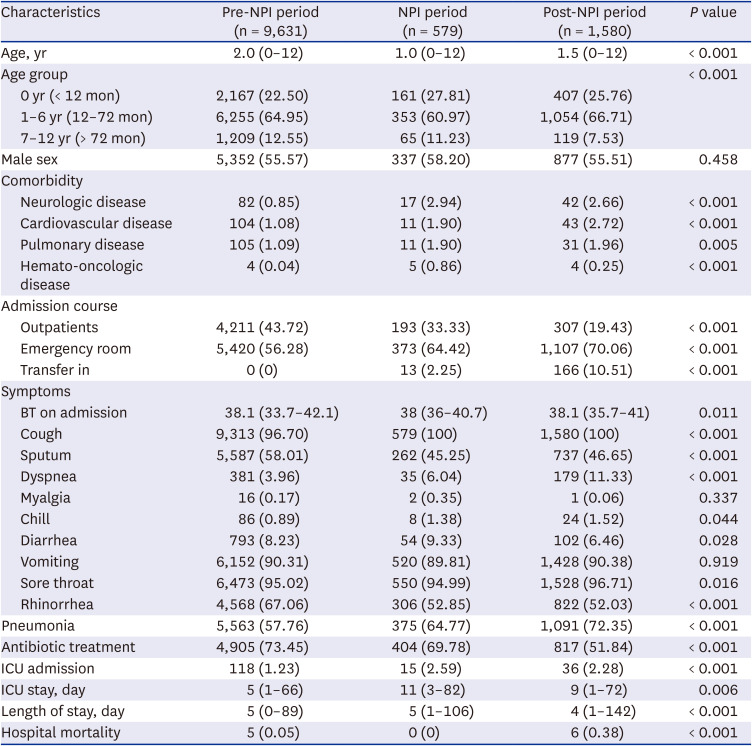
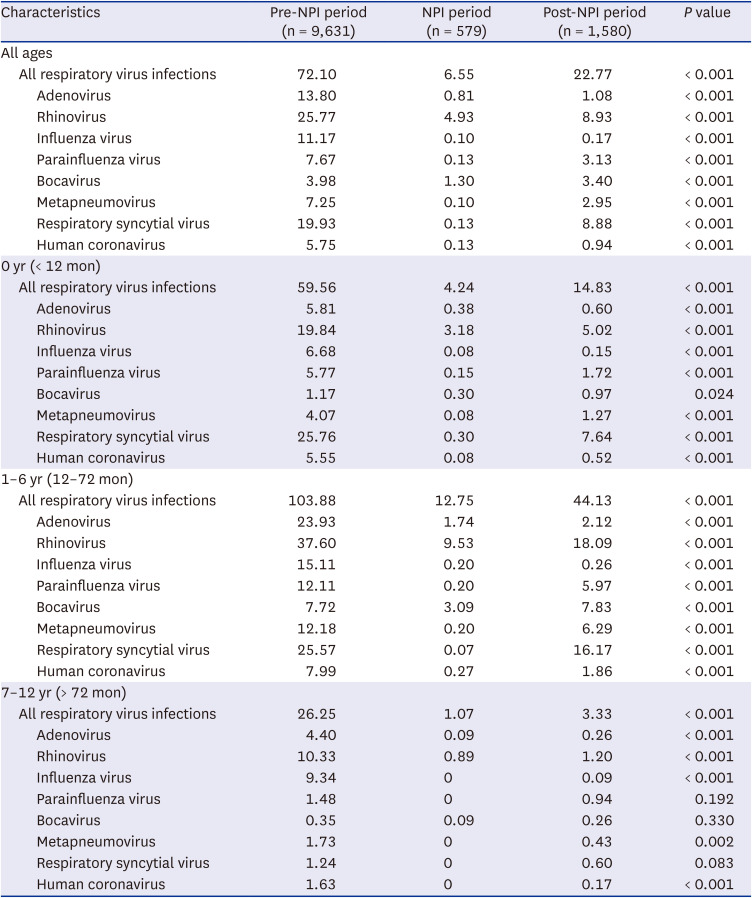
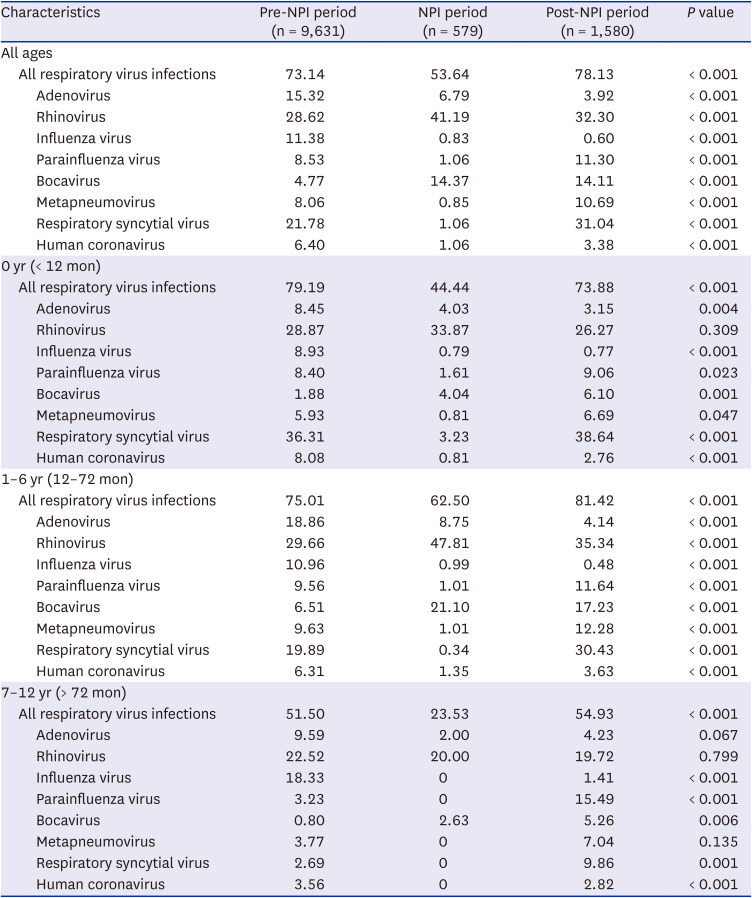
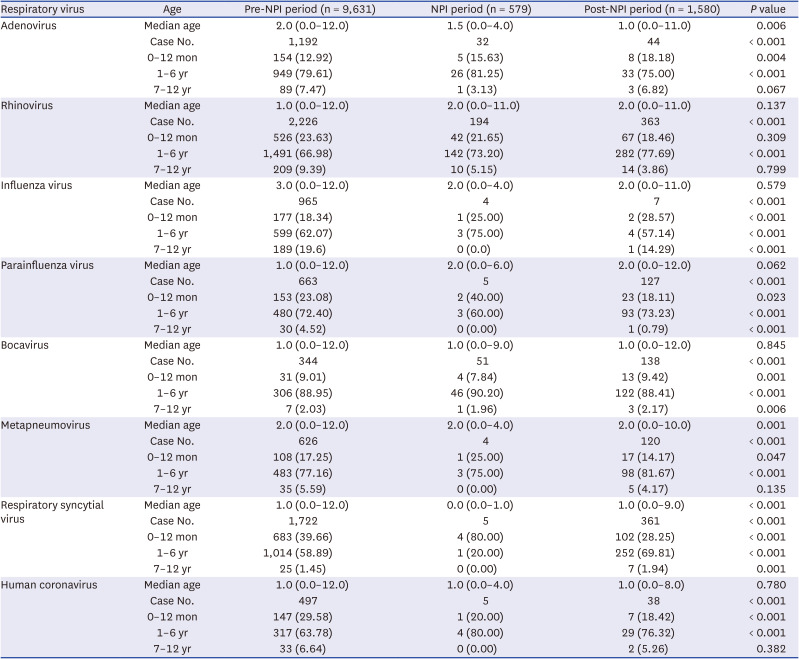
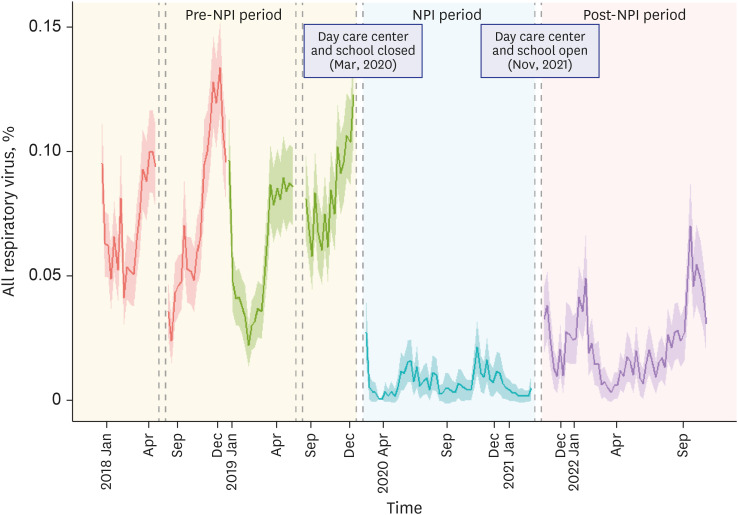
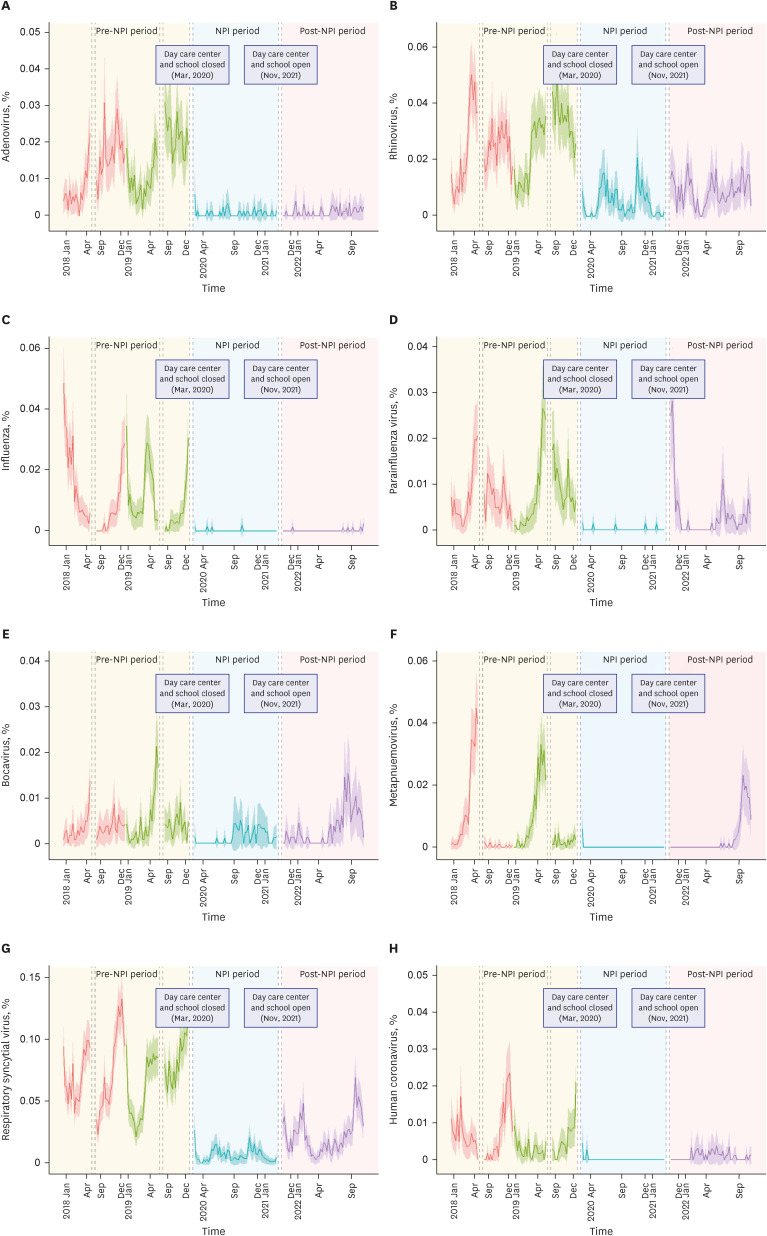




 PDF
PDF Citation
Citation Print
Print



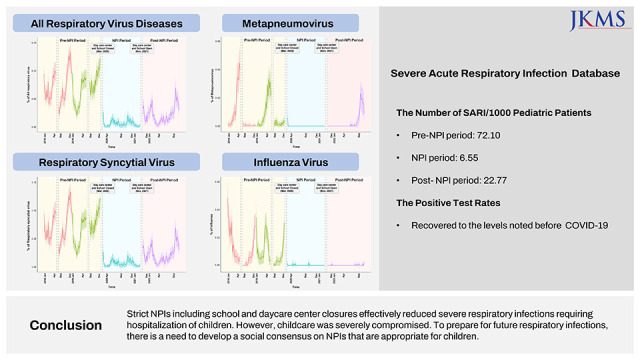
 XML Download
XML Download